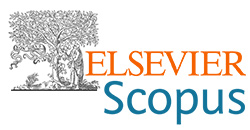Development of hyaluronate tethered magnetic nanoparticlesfor targeted anti-cancer drug delivery
DOI:
https://doi.org/10.62638/ZasMat1041Abstract
Despite the tremendous progress in understanding the molecular basis of the disease, cancer still remains one of the leading causes of deaths. Recently, advances in nanotechnology are rapidly enabling the development of novel, multifunctional materials with combined cancer specific targeting, therapeutic and diagnostic functions within a single nanocomplex (NP) that address the shortcomings of traditional disease diagnostic and therapeutic agents. Among the myriad of nanocarriers, magnetic nanoparticles (MNPs) have sparked extensive promise as novel theranostic applications as these MNPs can be directly targeted to the diseased cells with effective therapeutic efficiency. For this, these MNPs should be modified with some highly biocompatible polymers (specially polysaccharides) exhibiting the cancer targeting properties that can strongly interact with receptors expressed on the target cancer to facilitate accurate detection of the specific cancer and enhanced delivery to the target site while reducing unintended tside effects. Over the last few years, many groups have reported hyaluronic acid (HA) as the targeting agent as it directly delivers targeted MNPs to CD44 overexpressed cancer cells. In most of the cases, doxorubicin (DOX) has been used as the anticancer drug as it is largely utilized for treating a broad spectrum of cancers. In our work, we have designed a novel, intravenously injectable, CD44 receptor targeted MNP formulation, where the HA moiety of MNPs facilitate easy detection of cancer cells via receptor specific interactions, DOX can regress the cancer cells with simultaneous imaging efficacy. This theranostic MNPs led to the formation of novel nanoformulation, capable of performing concomitant detection, regression and imaging in in vitro CD44 over expressing cancer cells.
Keywords:
Multifunctional, MNP, Hyaluronic acid, Doxorubicin, CD44References
M.Maluccio, A.Covey (2012) Recent progress in understanding, diagnosing, and treating hepato-cellular carcinoma; CA Cancer J Clin., 62, 394-399.
https://doi.org/10.3322/caac.21161
S.Senapati, A.K.Mahanta, K.Sunil, P.Maiti (2018) Controlled drug delivery vehicles for cancer treatment and their performance; Signal Transduct Target Ther., 3, 7-26.
https://doi.org/10.1038/s41392-017-0004-3
L.Gan, L.Zhenjiang, S.Chao (2018) Obesity linking to hepatocellular carcinoma: A global view
https://doi.org/10.1016/j.bbcan.2017.12.006
Biochim Biophys Acta Rev Cancer., 1869, 97-102.
C.Sun, J.S.Lee, M.Zhang (2008) Magnetic nanoparticles in MR imaging and drug delivery; Adv. Drug Deliv. Rev., 60, 1252-1265.
https://doi.org/10.1016/j.addr.2008.03.018
M.E.Davis, Z.Chen, D.M.Shin (2008) Nanoparticle therapeutics: an emerging treatment modality for cancer; Nat. Rev. Drug Discov., 7, 771-782.
https://doi.org/10.1038/nrd2614
O.Veiseh, J.W.Gunn, M.Zhang (2010) Design and fabrication of magnetic nanoparticles for targeted drug delivery and imaging; Adv. Drug Deliv.Rev., 62, 284-304.
https://doi.org/10.1016/j.addr.2009.11.002
H.Maeda, J.Wu, T.Sawa, Y.Matsumura, K.Hori (2000) Tumor vascular permeability and the EPR effect in macromolecular therapeutics: a review; J Control Release; 65, 271-284.
https://doi.org/10.1016/S0168-3659(99)00248-5
H.Maeda, T.Sawa, T.Konno (2001) Mechanism of tumor-targeted delivery of macromolecular drugs, including the EPR effect in solid tumor and clinical overview of the prototype polymeric drug SMANCS; J. Control Release., 74, 47-61.
https://doi.org/10.1016/S0168-3659(01)00309-1
J.W.M.Bulte, D.L.Kraitchman (2004) Iron oxide MR contrast agents for molecular and cellular imaging; NMR Biomed., 17, 484-499.
https://doi.org/10.1002/nbm.924
J.H.Lee, Y.M.Huh, Y.Jun, J.Seo, J.Jang, H.T.Song, S.Kim, E.J.Cho, H.G.Yoon, J.S.Suh, J.Cheon (2007) Artificially engineered magnetic nanoparticles for ultra-sensitive molecular imaging. Nat. Med., 13, 95-99.
https://doi.org/10.1038/nm1467
Y.Pineiro, M.González Gómez, L. de Castro, A. Arnosa Prieto, A.García, P.S.Gudiña, R.Puig, J. Teijeiro, C.Yáñez-Vilar, S.J.Rivas (2020) Hybrid Nanostructured magnetite nanoparticles: from bio-detection and theragnostics to regenerative medicine. Magnetochemistry, 6, 4-31.
https://doi.org/10.3390/magnetochemistry6010004
A.Angelopoulou, A.Kolokithas-Ntoukas, C.Fytas, K. Avgoustakis (2019) Folic Acid-Functionalized, Condensed Magnetic Nanoparticles for Targeted Delivery of Doxorubicin to Tumor Cancer Cells Overexpressing the Folate Receptor. ACS Omega, 4, 22214-22227.
https://doi.org/10.1021/acsomega.9b03594
S.D.Jo, S.H.Ku, Y.Y.Won, S.H.Kim, I.C.Kwon (2016) Targeted Nanotheranostics for Future Personalized Medicine: Recent Progress in Cancer Therapy; Theranostics, 6, 1362-1377.
https://doi.org/10.7150/thno.15335
Z.Fang, X.Li, Z.Xu, F.Du, W.Wang, R.Shi, D.Gao (2019) Hyaluronic acid-modified mesoporous silica-coated superparamagnetic Fe3O4 nanopar-ticles for targeted drug delivery; International Journal of Nanomedicine, 14, 5785-5797.
https://doi.org/10.2147/IJN.S213974
L.J.Lapcik, L.Lapcik, S.S.De, J.Demeester, P. Chabrecek (1998) Hyaluronan Preparation, Struc-ture, Properties, and Applications; Chem. Rev., 98, 2663-2684.
https://doi.org/10.1021/cr941199z
B.P.Toole (2004) Hyaluronan: from extracellular glue to pericellular cue; Nat. Rev. Cancer, 4, 528-539.
https://doi.org/10.1038/nrc1391
Y. Lee, H. Lee, Y.B. Kim, J. Kim, T. Hyeon, H. Park, P.B. Messersmith, T.G. Park (2008) Bioinspired Surface Immobilization of Hyaluronic Acid on Monodisperse Magnetite Nanocrystals for Targeted Cancer Imaging; Adv Mater, 20, 4154-4157.
https://doi.org/10.1002/adma.200800756
H.Ponta, L.Sherman, P.A.Herrlich (2003) CD44: from adhesion molecules to signalling regulators; Nat Rev Mol Cell Biol, 4, 33-45.
https://doi.org/10.1038/nrm1004
H.J.Chung, H.Lee, K.H.Bae, Y.Lee, J.Park, H.Cho, J.Y.H.Park, R.Langer, D.Anderson, T.G.Park (2011) Facile Synthetic Route for Surface-Functionalized Magnetic Nanoparticles: Cell Labelling and Magnetic Resonance Imaging Studies. ACS Nano, 5, 4329-4336.
https://doi.org/10.1021/nn201198f
K.Y.Choi, K.H.Min, J.H.Na, K.Choi, K.Kim, J.H. Park, I.C.Kwon, S.Y.Jeong (2009) Self-assembled hyaluronic acid nanoparticles for active tumor targeting; J Mater Chem, 19, 106-114.
https://doi.org/10.1016/j.biomaterials.2009.09.030
H.J. Cho, H.Y. Yoon, H. Koo, S.H. Ko, J.S. Shim, J.H. Lee, K. Kim, I.C. Kwon, D.D. Kim (2011) Self-assembled nanoparticles based on hyaluronic acid-ceramide (HA-CE) and Pluronic® for tumor-targeted delivery of docetaxel. Biomaterials, 32, 7181-7190.
https://doi.org/10.1016/j.biomaterials.2011.06.028
W. Park, K.S.Kim, B.C.Bae, Y.H. Kim, K. Na (2010) Cancer cell specific targeting of nanogels from acetylated hyaluronic acid with low molecular weight. Eur J Pharm Sci, 40, 367-375.
https://doi.org/10.1016/j.ejps.2010.04.008
T.Gong, Z.Dong, Y. Fu, T.Gong, L.Deng, Z.Zhang (2019) Hyaluronic acid modified doxorubicin loaded Fe3O4 nanoparticles effectively inhibit breast cancer metastasis. J. Mater. Chem. B, 7, 5861-5872.
https://doi.org/10.1039/C9TB01250H
L. Song, Z. Pan, H. Zhang, Y. Li, Y. Zhang, J. Lin, G. Su, L. Xie, Y. Li, Z. Ho (2017) Dually folate/CD44 receptor-targeted self-assembled hyaluronic acid nanoparticles for dual-drug delivery and combination cancer therapy. J Mater Chem B., 5, 6835-6846.
https://doi.org/10.1039/C7TB01548H
D. Bhattacharya, M.Das, D.Mishra, I. Banerjee, S. K. Sahu, T. K Maiti, P. Pramanik (2011) Folate receptor targeted, carboxymethyl chitosan functionalized iron oxide nanoparticles: a novel ultradispersed nanoconjugates for bimodal imaging. Nanoscale, 3, 1653 -1662.
https://doi.org/10.1039/c0nr00821d
D.Bhattacharya, B.Behera, S.K.Sahu, R. Ananthakrishnan, T.K.Maity, P.Pramanik (2016) Design of dual stimuli responsive polymer modified magnetic nanoparticles for targeted anti-cancer drug delivery and enhanced MR imaging. New J. Chem., 40, 545-557.
https://doi.org/10.1039/C5NJ02504D
B. Gupta, B.K. Poudel, H.B. Ruttala, S. Regmi, S. Pathak, M. Gautam, S. Jin, J.H. Jeong, H.G. Choi, S. K. Ku, C. S. Yong, J. O. Kim (2018) Hyaluronic acid-capped compact silica-supported mesoporous titania nanoparticles for ligand-directed delivery of doxorubicin. Acta Biomaterialia, 80, 364--377.
https://doi.org/10.1016/j.actbio.2018.09.006
S. Wang, J. Zhang, Y. Wang, M. Chen (2016) Hyaluronic acid-coated PEI-PLGA nanoparticles mediated co-delivery of doxorubicin and miR-542-3p for triple negative breast cancer therapy. Nanomedicine, 12, 411-420.
https://doi.org/10.1016/j.nano.2015.09.014
K. Kim, K. Kim, J. H. Ryu, H. Lee (2015) Chitosan-catechol: a polymer with long-lasting mucoadhesive properties. Biomaterials, 52, 161-170.
https://doi.org/10.1016/j.biomaterials.2015.02.010
S. Wen, H. Liu, C. Hongdong, M. Shen, X. Shi (2013) Targeted and pH-responsive delivery of doxorubicin to cancer cells using multifunctional dendrimer-modified multi-walled carbon nanotubes. Adv. Healthcare Mater, 2, 1267-1276.
https://doi.org/10.1002/adhm.201200389
A.M. Reddy, B.K. Kwak, H.J. Shim (2010) In vivo Tracking of Mesenchymal Stem Cells Labeled with a Novel Chitosan-coated Superparamagnetic Iron Oxide Nanoparticles using 3.0T MRI. J Korean Med Sci., 25, 211-219.
https://doi.org/10.3346/jkms.2010.25.2.211
J. Krejci, J. Pachernik, A. Hampl, P. Dvorak (2008) In vitro labelling of mouse embryonic stem cells with SPIO nanoparticles. Gen Physiol Biophys, 27, 164-173.
J. Y. Jeong, E.H. Hong, S. Y. Lee, J.Y. Lee, J. H. Song, S. H. Ko, J. S. Shim, S. Choe, D. D. Kim, H.J. Ko, H. J. Cho (2017) Boronic acid-tethered amphiphilic hyaluronic acid derivative-based nanoassemblies for tumor targeting and penetration. Acta Biomater, 53, 414-426.
https://doi.org/10.1016/j.actbio.2017.02.030
M. Ashrafizadeh, S. Mirzaei, M.H. Gholami, F. Hashemi, A. Zabolian, M. Regi, K. Hushmandi, A. Zarrabi, N.H. Voelcker, A. Reza Aref, M. Hamblin, R. Varma, R. S. Samarghandian, S. Arostegi, I.J. Alzola, M. Prem Kumar, A.Thakur, V. K. Nabavi, N. Makvandi, P. Tay, F. R. Orive, (2021) Hyaluronic acid-based nanoplatforms for Doxoru-bicin: A review of stimuli-responsive carriers, co-delivery and resistance suppression. Carbohydrate Polymers, 272, 118491-118521.
https://doi.org/10.1016/j.carbpol.2021.118491
H.A. Chen, Y.J. Lu, B. S. Dash, Y. K. Chao, J. P. Chen (2023) Hyaluronic Acid-Modified Cisplatin-Encapsulated Poly(Lactic-co-Glycolic Acid) Magnetic Nanoparticles for Dual-Targeted NIR-Responsive Chemo-Photothermal Combination Cancer Therapy. Pharmaceutics., 15, 290-314.
https://doi.org/10.3390/pharmaceutics15010290
J. Dou, Y.Mi, S.Daneshmand, M.H.Majd (2022) The effect of magnetic nanoparticles containing hyaluronic acid and methotrexate on the expression of genes involved in apoptosis and metastasis in A549 lung cancer cell lines. Arabian Journal of Chemistry., 15,104307.
https://doi.org/10.1016/j.arabjc.2022.104307
H.C.Wu, T.W.Wang, S.Y.Hsieh, J.S.Sun, P.L.Kang (2016) Targeted Delivery of Hyaluronan-Immobilized Magnetic Ceramic Nanocrystals. J. Biomed. Nanotechnol, 12, 103-113.
https://doi.org/10.1166/jbn.2016.2128
M.D.Zhao, J.L.Cheng, J.J.Yan, F.Y.Chen, J.Z. Sheng, D.L.Sun, J.Chen, J.Miao, R.J.Zhang, C.H. Zheng, H.F.Huang (2016) Hyaluronic acid reagent functional chitosan-PEI conjugate with AQP2-siRNA suppressed endometriotic lesion formation. Inter. J. Nanomed., 11, 1323-1336.
https://doi.org/10.2147/IJN.S99692
Z.Chai, C.Teng, L.Yang, L.Ren, Z.Yuan, S. Xu, M. Cheng, Y.Wang, Z.Yan, C.Qin, X. Han, L.Yin (2020) Doxorubicin delivered by redox-responsive Hyaluronic Acid-Ibuprofen prodrug micelles for treatment of metastatic breast cancer. Carbohydrate Polymers, 245, 116527-116545.
https://doi.org/10.1016/j.carbpol.2020.116527
Y.L.Su, J.Wang, H.Z.Liu (2002) Formation of a Hydrophobic Microenvironment in Aqueous PEO− PPO−PEO Block Copolymer Solutions Investigated by Fourier Transform Infrared Spectroscopy. J. Phys. Chem. B, 106, 11823-11828.
https://doi.org/10.1021/jp026160+
S. Liu, Y.Zhao, M. Sen. Y. Hao, X. Wu, Y. Yao, Y. Li, Q. Yang. (2022) Hyaluronic acid targeted and pH-responsive multifunctional nanoparticles for chemo-photothermal synergistic therapy of atherosclerosis. J. Mater. Chem. B. 10, 562-570.
https://doi.org/10.1039/D1TB02000E
Z. Luo, Y.Dai, H.Gao (2019) Development and application of hyaluronic acid in tumor targeting drug delivery. Acta Pharmaceutica Sinica B., 9, 1099-1112.
https://doi.org/10.1016/j.apsb.2019.06.004
H.Urakawa, S.Tsukushi, H.Sugiura (2014) Neoadjuvant and adjuvant chemotherapy with doxorubicin and ifosfamide for bone sarcomas in adult and older patients. OncolLett., 8, 2485-2488.
https://doi.org/10.3892/ol.2014.2567
X.Pang, Z.Lu, H.Du, X.Yang, G.Zhai (2014) Hyaluronic acid-quercetin conjugate micelles: Synthesis, characterization, in vitro and in vivo evaluation. Colloids Surf B Biointerfaces., 123, 778-786.
https://doi.org/10.1016/j.colsurfb.2014.10.025
Y.H.Ling, A.K. el-Naggar, W.Priebe, R.Perez-Soler (1996) Cell cycle-dependent cytotoxicity, G2/M phase arrest, and disruption of p34cdc2/cyclin B1 activity induced by doxorubicin in synchronized P388 cells. Mol. Pharmacol., 49, 832-841.







